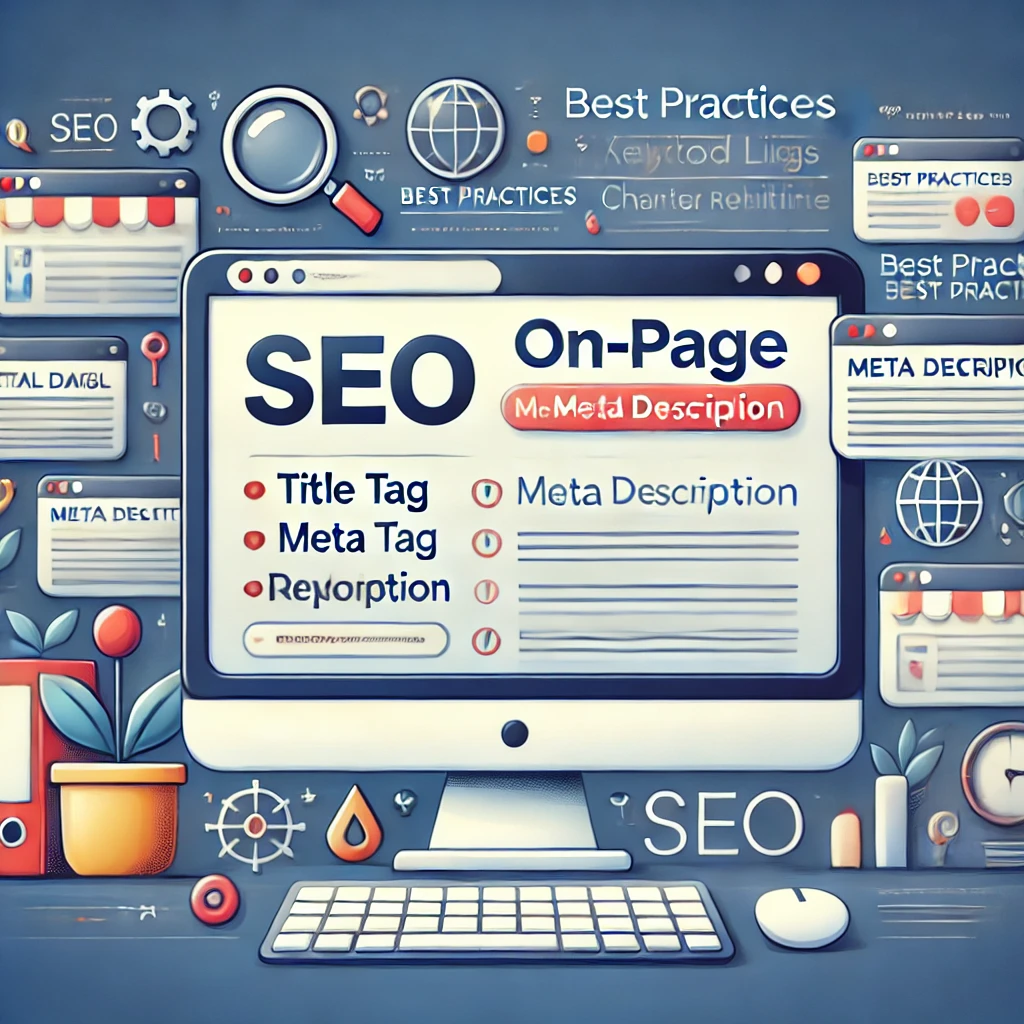Best Practices for Writing Effective Meta Titles and Meta Descriptions
On-page SEO is a critical aspect of any SEO strategy, and two of the most important elements are titles and meta descriptions. These components help search engines understand the content of your pages and influence click-through rates from search engine results pages (SERPs). This lesson will cover best practices for writing effective titles and meta descriptions to improve your website’s visibility and performance.
Importance of Meta Titles and Meta Descriptions
- Titles (Title Tags)
- Visibility: Titles are often the first thing users see in SERPs. A well-crafted title can attract clicks and improve your ranking.
- Relevance: Search engines use titles to understand the content of your page. Including relevant keywords helps search engines rank your page appropriately.
- User Experience: Clear and descriptive titles help users understand what to expect from your content.
- Meta Descriptions
- Click-Through Rates (CTR): A compelling meta description can entice users to click on your link, improving your CTR.
- Summary of Content: Meta descriptions provide a brief overview of your page’s content, helping users decide if your page is relevant to their query.
- SEO Impact: While meta descriptions do not directly impact rankings, they influence user behavior, which can indirectly affect your SEO.
Best Practices for Optimizing Titles
- Include Primary Keywords
- Use your primary keyword near the beginning of the title. This helps search engines understand the main topic of your page.
- Keep It Concise
- Aim for a title length of 50-60 characters. This ensures your title displays fully in SERPs without getting cut off.
- Be Descriptive and Compelling
- Write titles that accurately describe the content of your page while being compelling enough to attract clicks. Use action words and create a sense of urgency when appropriate.
- Use Branding
- Include your brand name at the end of the title when relevant. This helps build brand recognition and trust.
- Avoid Keyword Stuffing
- Do not overuse keywords. Focus on creating natural and readable titles that appeal to both users and search engines.
Best Practices for Optimizing Meta Descriptions
- Incorporate Keywords
- Include primary and secondary keywords naturally within the meta description. This highlights the relevance of your content to search queries.
- Keep It Within Character Limits
- Aim for a meta description length of 150-160 characters. This ensures your description displays fully in SERPs.
- Provide a Clear Summary
- Summarize the content of your page concisely and clearly. Make sure users know what to expect when they click your link.
- Use a Call to Action (CTA)
- Encourage users to take action by including a CTA. Phrases like “Learn more,” “Discover,” or “Find out” can be effective.
- Focus on User Intent
- Write descriptions that match the intent of the user’s search. Understand what users are looking for and address their needs directly.
- Make It Unique
- Each meta description should be unique to avoid duplicate content issues and to provide specific information about each page.
Examples of Optimized Titles and Meta Descriptions
Example 1
- Title: “10 Effective Home Workouts for Beginners | FitLife”
- Meta Description: “Discover 10 easy and effective home workouts for beginners. No equipment needed! Start your fitness journey today with FitLife. Learn more.”
Example 2
- Title: “Top 5 Digital Marketing Strategies for 2024 | XYZ Marketing”
- Meta Description: “Stay ahead with the top 5 digital marketing strategies for 2024. Boost your online presence and drive traffic with XYZ Marketing. Read our guide.”
Example 3
- Title: “How to Optimize Your Website for SEO | Ultimate Guide”
- Meta Description: “Learn how to optimize your website for SEO with our ultimate guide. Tips on keyword research, on-page SEO, and link building. Get started now!”
Conclusion
Optimizing titles and meta descriptions is a crucial part of on-page SEO. By following best practices and focusing on relevance, clarity, and engagement, you can improve your search engine visibility and attract more clicks to your website. Remember, the goal is to create titles and descriptions that not only appeal to search engines but also resonate with your audience, encouraging them to visit your site.

